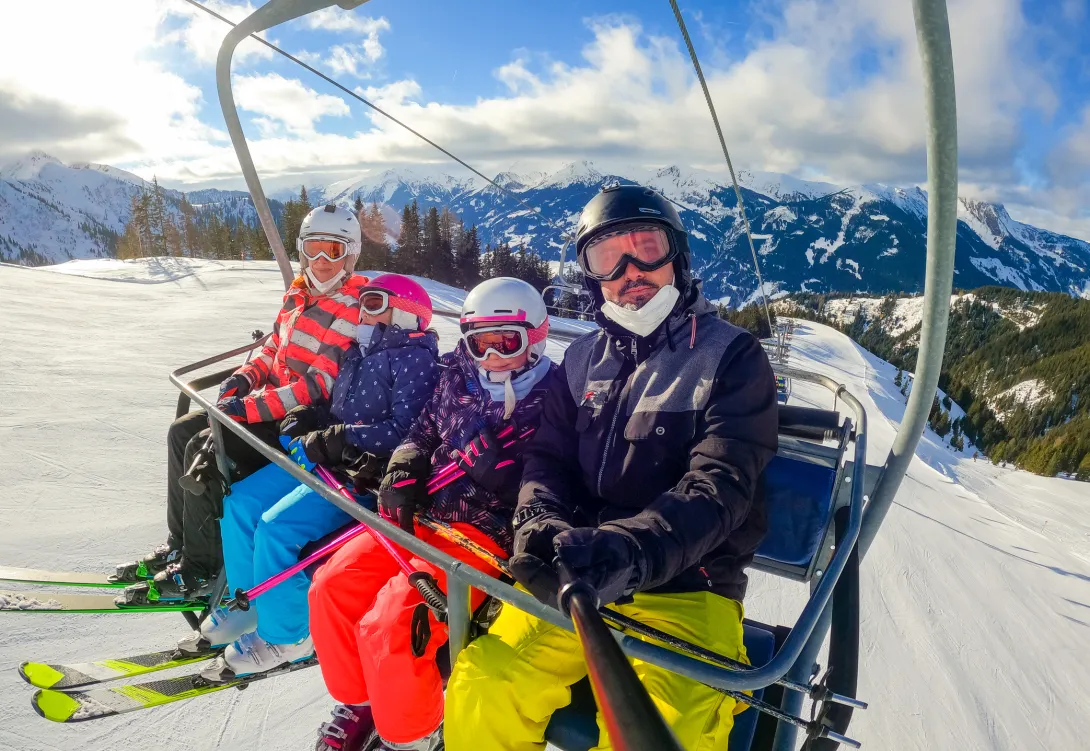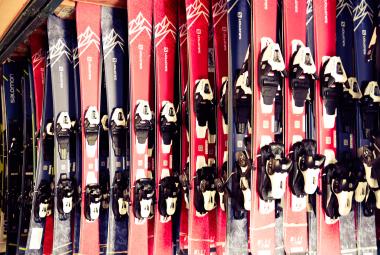Goggles are one of the most important pieces of your ski equipment as reduced visibility is not only annoying, but can even be dangerous. Goggles protect your eyes from the sun and wind, keep snow and any potential debris out of your eyes, and improve visibility.
There are tons of different ski goggles out on the market and it can all be pretty confusing when buying ski goggles for the first time. How should they fit? Which color lenses should I get? What technology is necessary and what’s not? How do I keep goggle lenses from getting foggy?
In this article, I will walk you through everything you need to know when shopping for ski goggles. Keep reading to learn how to make an informed decision when buying ski goggles for the first time.
Size

Ski goggles will come in a variety of different sizes and the sizing is pretty forgiving so you could most likely fit into multiple sizes of goggles. Sizing varies by brand, but is typically divided by child and adult and either small, medium, or large. The larger the goggles the more peripheral vision you will have, but you need to make sure that the goggles fit snugly on your face and under your helmet as well.
Your goggle size is probably going to be similar to your helmet size and hat size, so start there if you’re unsure what size goggles to try out.
Color

The color of your ski goggles lenses is not just about looks, it’s more about light transmission and the features they have.
When thinking about the color of your ski goggles, you’ll need to think about what conditions you primarily ski in. If you only ski on bluebird days when it’s sunny, you’ll want to pick a darker colored lens that has a lower light transmission, letting in about 5-20% light. These lenses will be opaque and darker in color such as black or gold.
If you ski in cloudy, dark, or lower light conditions you’ll need a light colored lens. These lenses have a much higher light transmission rate around 60-90%. These lenses will be either clear, yellow, pink, or maybe even bronze and very see-through.
If you ski in a mix of sunny and low light conditions, I’d recommend getting a variety of lenses and prioritize getting a goggle frame that allows you to interchange your lenses. If just one lens fits into your budget right now, I’d recommend getting a blue, green, or red lens that lets in about 25-40% of light. These are a good all-around lens for any condition.
Features

There are some features to ski goggles that you need, and others that you might want but aren’t required. Let’s break them down below.
Essential Features

UV Protection
When you’re in higher altitudes, the sun’s rays are even stronger. Wearing goggle lenses with 100% UV protection will prevent damage to your eyes and prevent eye fatigue, so this feature is most definitely essential.
Ventilation
All goggles should have at least some ventilation, but some have more than others. It’s important that your helmet leaves these vents clear. If you particularly notice a problem with fogging lenses and have tried our tips, I’d recommend prioritizing ski goggles with extra ventilation.
Helmet Compatibility
When trying on goggles, it’s important to bring your helmet with you if you have your own. Goggles that are too small will leave gaps on your face, letting air and wind in that you don’t want. Goggles that are too large won’t fit under your helmet at all. The integration of your goggles to your helmet is an important thing to consider when buying ski goggles.
Additional Features

Interchangeable Lenses
I highly recommend purchasing a pair of goggles that have interchangeable lenses. Even if you don’t see yourself changing out the lenses right now, you might in the future. You never know what the conditions are going to be like, so having the option to switch your lenses out will save you from having to buy a whole other set of goggles.
Anti-fog Coating
Some companies apply a hydrophilic chemical treatment to the inside of their lenses, which prevents them from fogging. It’s ultra important that you read the manufacturer’s instructions for goggle care with these types of lenses as the coatings can scratch and weather if you don’t care for them properly.
Over The Glasses Goggles
I typically wear glasses under my goggles in the morning (because who can be bothered to poke their eyeballs with contacts before noon?!) and find that it’s extra important for the frame to be compatible with my glasses otherwise it can lead to discomfort and even headaches.
Top Tips For Buying Goggles

How to avoid foggy goggle lenses
Nobody wants their goggle lenses to fog. It’s not only annoying, but can even be dangerous. Goggles fog when the air temperature outside is different from the air temperature on your face. When you start to get hot and sweaty, your lenses will likely start to fog. But there are some things you can do to avoid the fog. Here are our top tips:
- Don’t wipe the inside of your lens. This won’t help the situation, and it will ruin the anti-fog coating.
- Don’t put your goggles on your forehead or helmet.
- Keep moving.
- Keep your neck gaiter or balaclava under your goggles, don’t tuck them underneath.
Choosing polarized vs nonpolarized lenses

Polarized lenses are often more expensive than non-polarized lenses, but that doesn’t mean they’re better. In fact, a lot of companies don’t even make polarized ski goggles and I wish all companies would stop making polarized ski goggles.
Polarization is a technology that reduces glare, which is great when you are driving and around water. And you may think that you want to reduce the glare on the snow, but the problem with polarized lenses on the ski slopes is that they cut the glare on ice, making it impossible to watch out for ice patches.
If you’re skiing in powder only, polarized lenses are okay. But considering you likely won’t be doing that, especially as a beginner, makes polarized ski goggle lenses pretty much useless.







